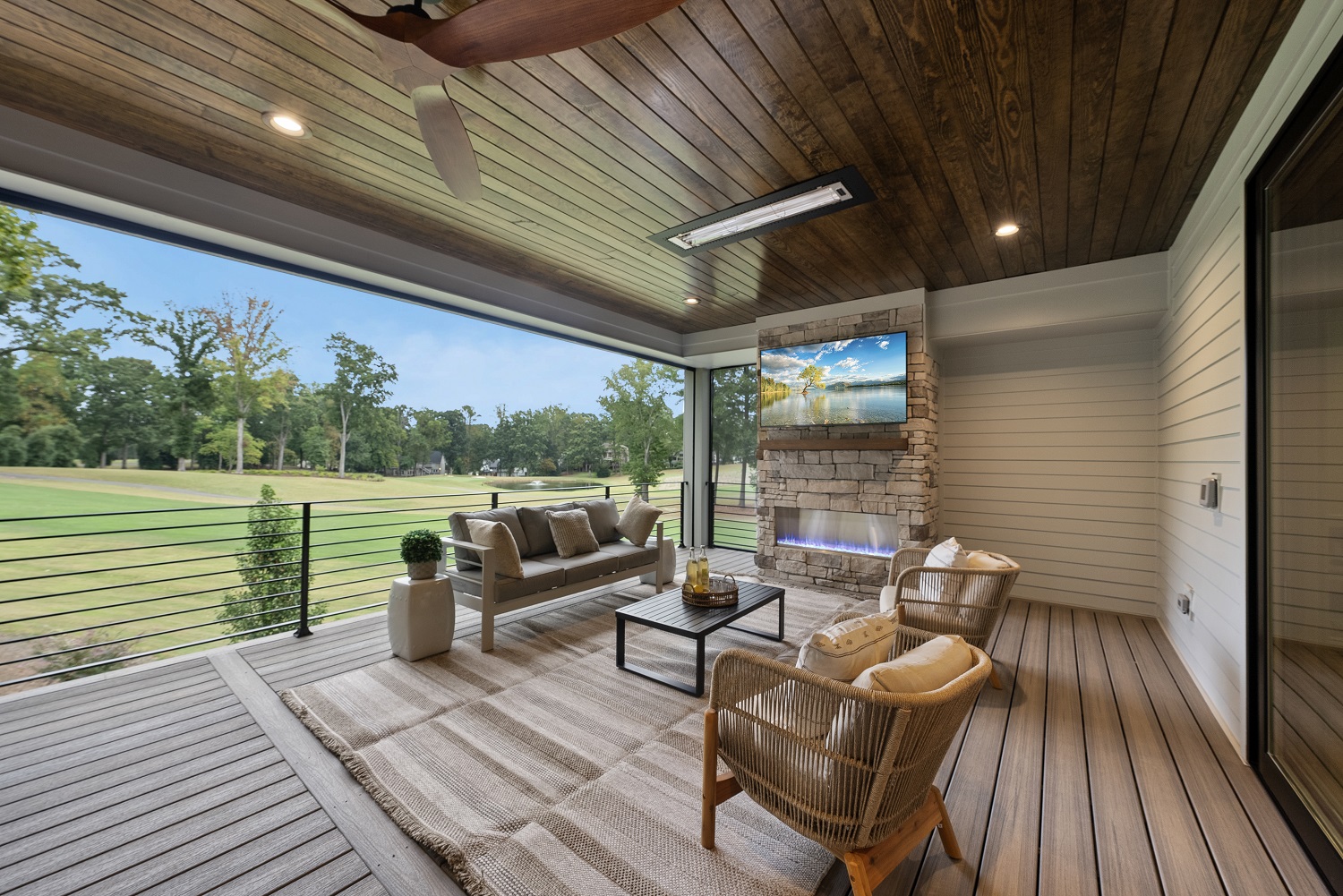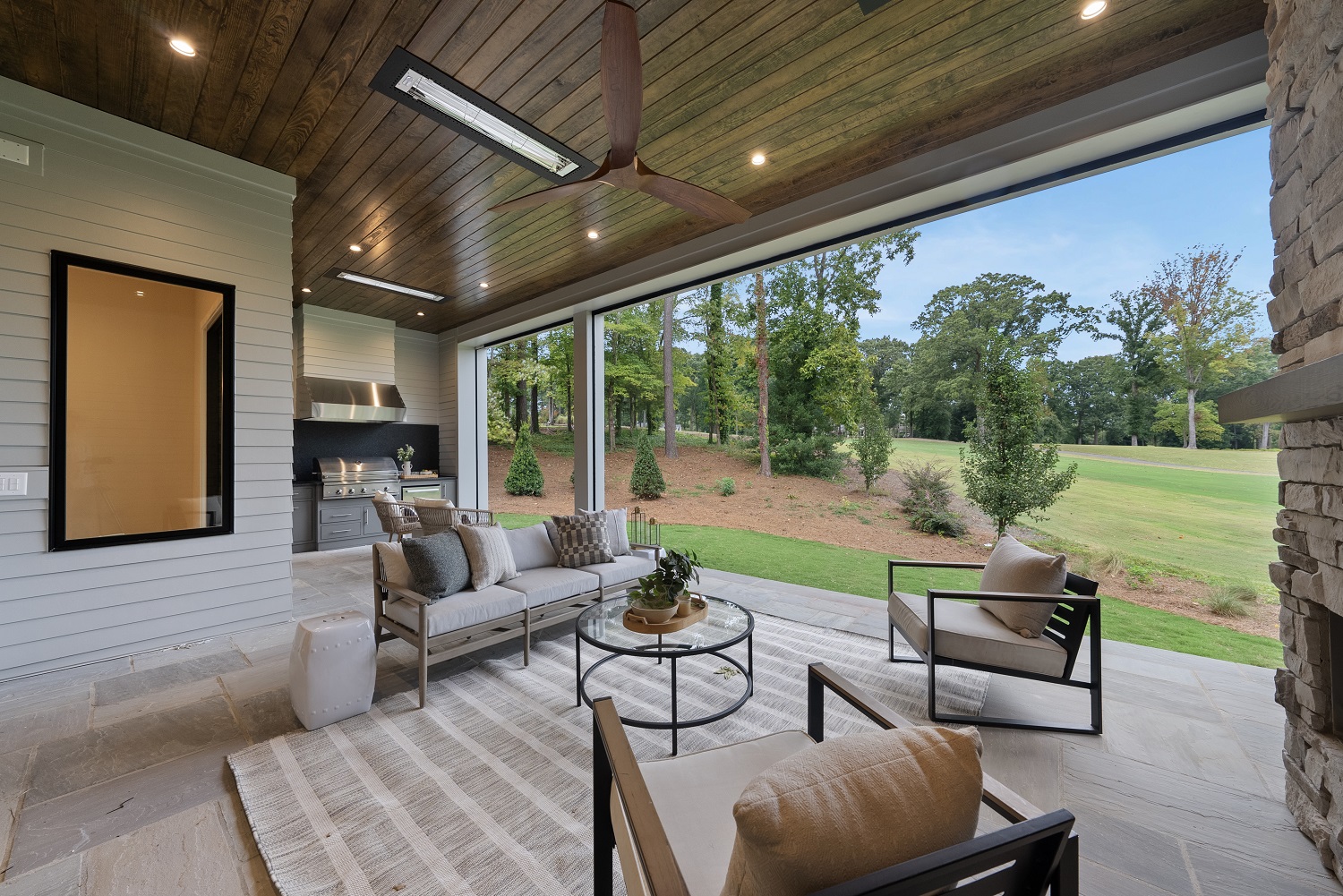Weather plays a big role in how long it takes to build a home. In a place like Raleigh, where summers can be hot and humid and winters come with their share of cold snaps and rain, it’s no surprise that local weather patterns can slow things down or speed things up. If you’re planning a custom build, weather is something you’ll want to pay attention to, especially when it comes to setting your expectations around timelines.
Home construction happens in phases, and each one is affected by different types of weather. Some delays are minor and can be worked around, while others might stretch your schedule by weeks. Understanding how shifts in temperature, storms, and seasonal changes can impact a build helps you stay informed and better prepared throughout the whole process. That’s especially true for homeowners working with Raleigh builders who need to schedule their projects around the local climate.
Every season brings something different that can impact your home’s progress. From muddy ground after spring showers to chilly winter mornings that slow drying times, being aware of what to expect each season is one way to stay ahead of the delays.
Here’s how Raleigh’s yearly weather tends to affect the different stages of construction:
– Spring: Many people see spring as a great time to start their home build. The weather is usually mild and the soil is soft enough for excavation. But spring also comes with steady rain that can turn the ground to mud, delaying digging, framing, or setting the foundation.
– Summer: Long sunny days often lead to longer hours on the job, which can help things move quickly. Still, Raleigh summers are hot and sticky. Heat and humidity can impact workers’ energy levels and affect materials like lumber or adhesives. Afternoon storms can pop up as well, stopping work unexpectedly.
– Fall: The cooler air makes it easier on everyone working outdoors, and you’ll likely see smooth progress during these months. That said, fall storms—especially during hurricane season—can dump heavy rain, halting progress or making the build site hard to access.
– Winter: While Raleigh doesn’t usually see harsh snowstorms or bitter freezes, some winter days get cold enough to mess with drying times. Concrete and paint are both sensitive to temperature and moisture. If these jobs are rushed or planned poorly during this period, the results might not last.
When you prepare for these situations ahead of time, it becomes easier to stick to your schedule as closely as possible without letting seasonal surprises take over.

Rain alone might not sound like a major problem, but when it stretches over multiple days or rolls in unexpectedly, it affects nearly every early stage of construction. In Raleigh, steady rain in the spring or fall can leave building sites too wet to handle framing or groundwork.
One of the biggest areas impacted by rain is the foundation. Concrete needs dry, stable ground to hold properly. Pouring it while the site is soaked can lead to cracks, shifting, or settling later on. Once the framing starts, too much moisture can damage materials or create delays by making it unsafe for crews to work on the structure.
To manage rain delays and stay on track, here are a few practical tips:
In Raleigh, rain often shows up fast and without much warning, but with the right team and a flexible approach, it doesn’t have to stall your build completely.
Construction might run faster or slower based on the current temperature. Raleigh doesn’t get the worst of the extreme heat or cold that other parts of the country face, but both high and low temperatures can create roadblocks.
Summer brings high heat and sticky humidity. These conditions make it harder for workers to perform long shifts outdoors and sometimes require stops or breaks based on safety guidelines. Materials like lumber can swell or warp in the humidity. Certain products like adhesives or finishes may also respond poorly to extreme heat, with slower drying or curing times.
Winter has its own challenges. While snow is uncommon in Raleigh, overnight lows can still dip far enough to affect concrete pours or paint jobs. Concrete poured when it’s too cold may not cure correctly, possibly resulting in cracks down the road.
To protect progress during temperature swings, many Raleigh builders take the following measures:
– Shift work hours earlier in the day to avoid peak summer heat.
– Store adhesives, paints, and finishes at stable indoor temperatures.
– Select construction materials with better tolerance to temperature changes.
– Use concrete blankets or ground heaters during winter-time pours.
– Anticipate quality checks to make sure cold or heat hasn’t affected the work.
With an experienced crew, these challenges become manageable. Consistent planning and careful scheduling are what help avoid rushed decisions that might cause bigger issues down the line.

Some weather delays are just going to happen. Even the best plans can’t outsmart Raleigh’s unpredictable conditions. That’s why a little flexibility can go a long way when building your dream home.
Start by padding your timeline up front. This doesn’t mean pushing your end date too far out, just allowing extra days here and there as a buffer when setting up your schedule. When rain or cold snaps hit, you’ll already be prepared without needing to reschedule every stage of the build.
Next, work closely with your builder. Good communication allows for quick adjustments. If one task can’t happen due to rain, the builder might shift workers to indoor prep work or keep making progress in other parts of the project.
You’ll also want to make sure the site is ready for whatever weather might come through. Drainage, tarps, and smart site layout all help reduce the impact of storms or temperature swings.
All of this reduces stress while helping you stay focused on the bigger picture: creating a strong, beautiful home that’ll last.
Working in rain or cold doesn’t mean corners get cut. In fact, quality can stay high if everyone on the team knows how to adjust the plan in the right way.
Sometimes, staying on schedule just isn’t worth the risk of rushing a job. For example, trying to beat a rainstorm by pouring concrete faster can do more harm than good. It’s smarter to wait out the storm and ensure the job gets done right the first time. Builders who know the local weather risks can spot these moments and keep the focus on long-lasting results.
It’s also about using the right materials and tools based on upcoming forecasts. Weather-aware choices give every part of the home—from the framing to the roof—a better chance of holding strong for years to come.
Choosing Raleigh builders who take weather seriously is one of the most reliable ways to maintain quality. They’ll work slower when needed, pause the schedule wisely, and know how to deliver great results even when the clouds don’t cooperate.
Getting to know how weather affects your home build helps you go in with more realistic expectations and stronger peace of mind. Rainy weeks, heat waves, and cold snaps don’t need to ruin your plans when your team is ready for them.
From understanding which seasons fit your goals to learning how to respond to unexpected changes, being informed helps keep things calm and clear. The weather might toss in a few surprises, but thoughtful planning, open communication, and builders deeply familiar with Raleigh’s climate can help you work through it.
Smart decisions made today will shape the strength and stability of your home tomorrow. Keep your goals in sight, prepare for a few bumps along the way, and trust in the crew that’s guiding your build through every kind of weather.
With a construction project influenced by unpredictable weather, it’s important to work with a team that understands the nuances of building in Raleigh. Homestead Building Company provides the expertise needed during your home building journey. Working with experienced Raleigh builders helps you navigate weather challenges effectively, leading to a home that meets your expectations. Explore our home-building options today and see how we can make your dream home a reality.